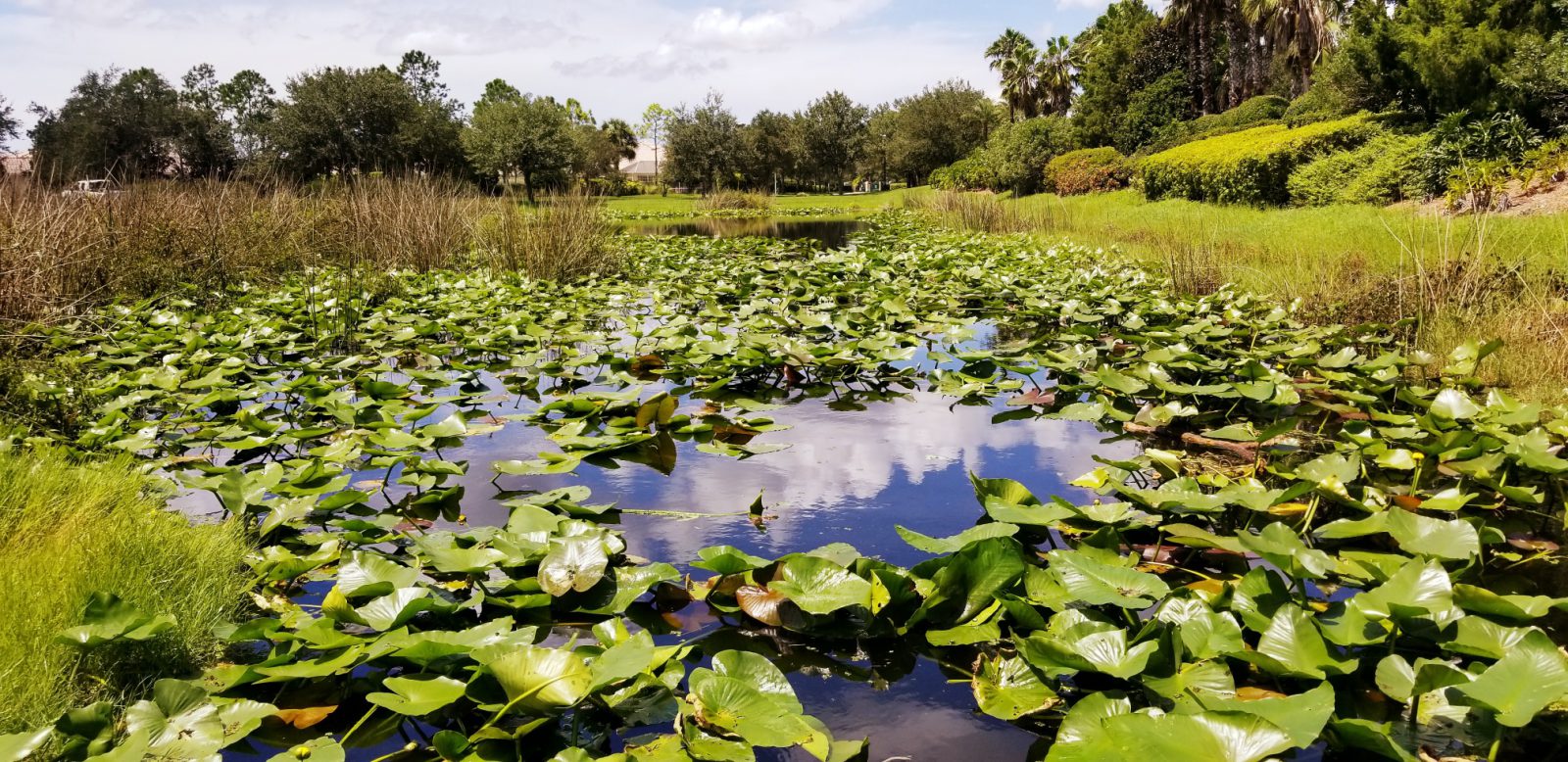
Common Nuisance & Invasive Plants You May Be Mistaking for Waterlilies
When you look out at your lake or pond, you may see some floating, broad-leaved plant species. The most common native species with floating leaves are yellow waterlily (Nuphar variegata), white waterlily (Nymphaea odorata) and watershield (Brasenia schreberi). Depending on the region, waterlilies and watershield can be found inhabiting the shallow littoral zones of lakes and ponds, often covering the surface of these waterbodies with floating leaves and flowers.
When managed properly, these species occupy an important ecological niche by creating habitat and providing food for aquatic organisms. However, several nuisance and invasive plants share physical characteristics with these beneficial species, making incorrect identification an easy—and potentially catastrophic—mistake. These nuisance and invasive plants rapidly outcompete native species, can negatively impact the ecology of the aquatic habitats they invade, and can drastically diminish the recreational and aesthetic value of your lake or pond.
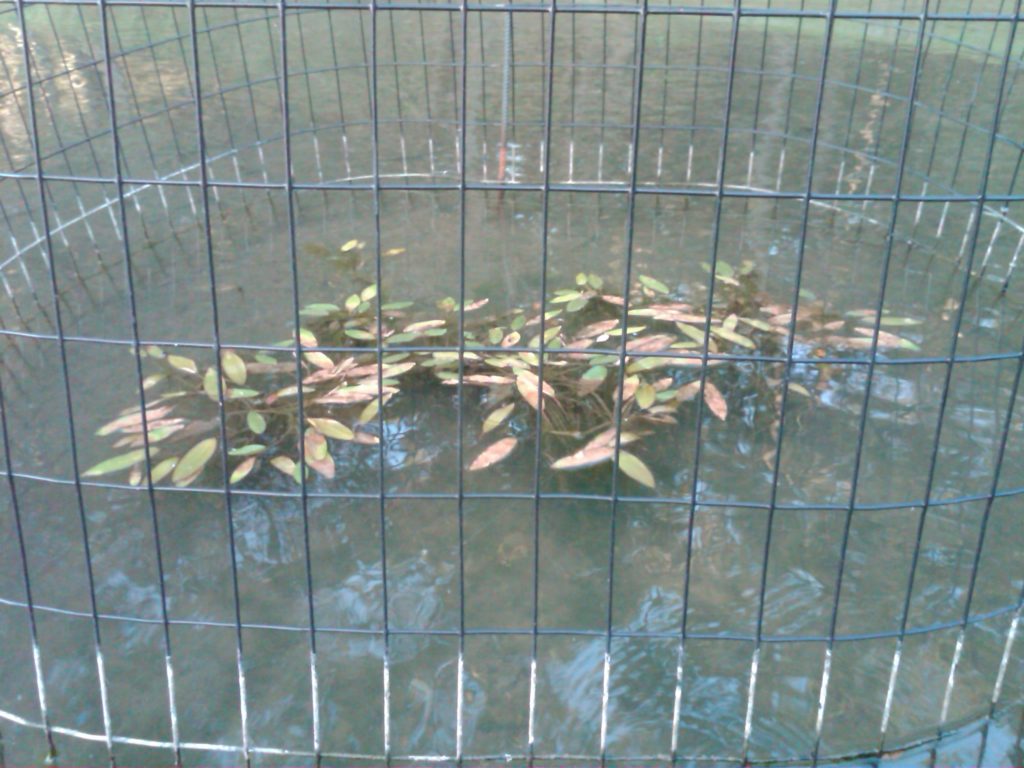
Pondweed
Many pondweed species, including largeleaf pondweed (Potamogeton amplifolius) and floating leaf pondweed (P. natans) are sometimes mistaken for waterlilies when they produce floating foliage on the surface. These species grow mainly underwater, but later in the season, they produce floating leaves and flower structures. Although these species are native to the US and play an important part in the food web and habitat in the ponds they inhabit, they may become a nuisance when their growth becomes excessive. Proactive management of pondweed can help ensure a healthy balance of open water and native vegetation is maintained.
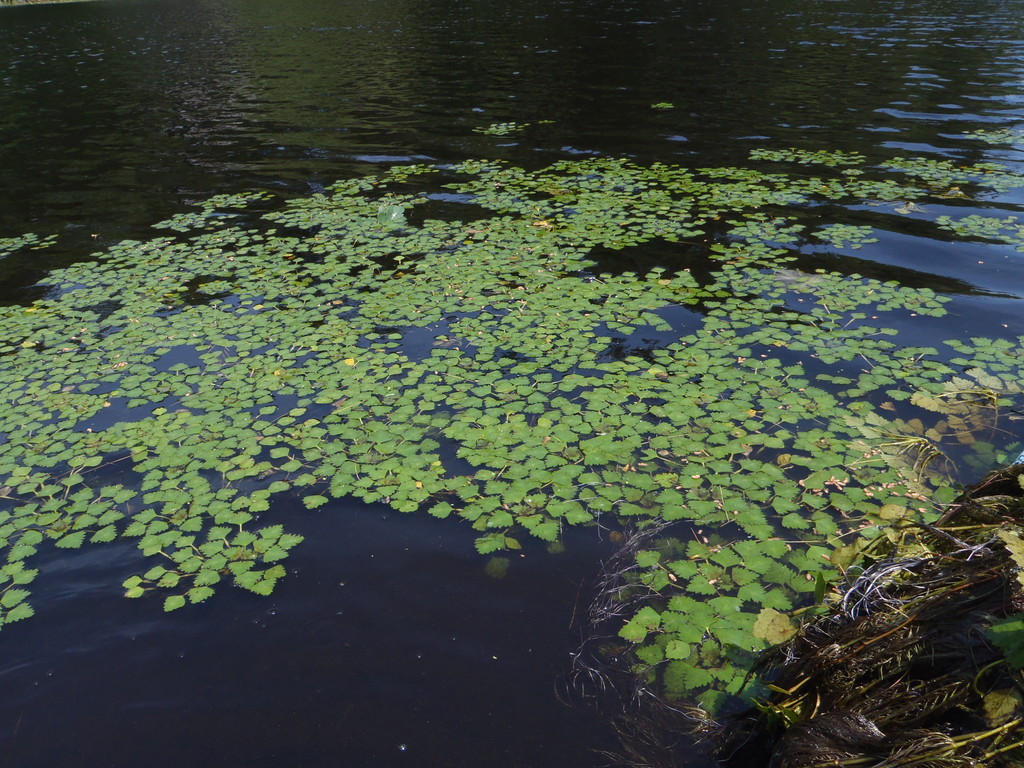
Water Chestnut
Water chestnut (Trapa natans), another species sometimes confused with waterlilies, has floating leaves arranged in a rosette pattern, radiating from a central stalk. The stalk is rooted to the pond bottom and covered in feathery submersed leaves. These particular plants grow in extremely tight proximity to one another, creating dense areas of growth that crowd out native plant species. Water chestnut has invaded waterways from Canada to Virginia along the East Coast since its introduction in the 1870s. There are several management options for helping control or prevent water chestnut.
When the infestation is limited, it is possible to control it through mechanical harvesting and hand pulling efforts. However, if the growth is too extensive or access to the waterbody is limited, a treatment program performed by an aquatic management professional may be utilized. With water chestnut control, timing is everything; each rosette produces up to twenty seeds, allowing populations to explode in a few short seasons. These seeds, called caltrops, are able to remain dormant on the lake or pond bottom for several years, allowing infestations to worsen as more seeds are produced and a robust seed bank is created. This seed bank can fuel future growth for several years after plants at the surface are totally removed.
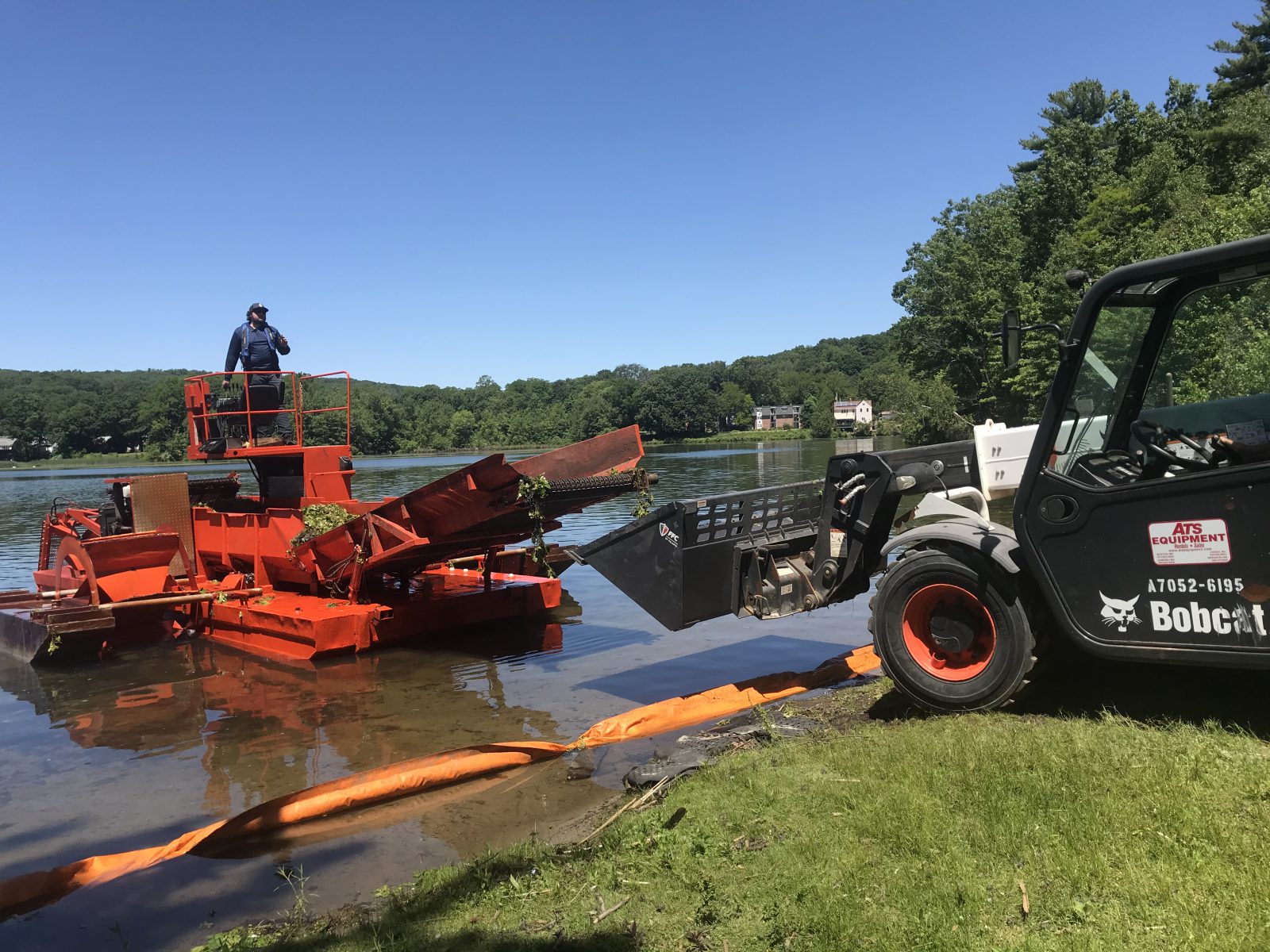
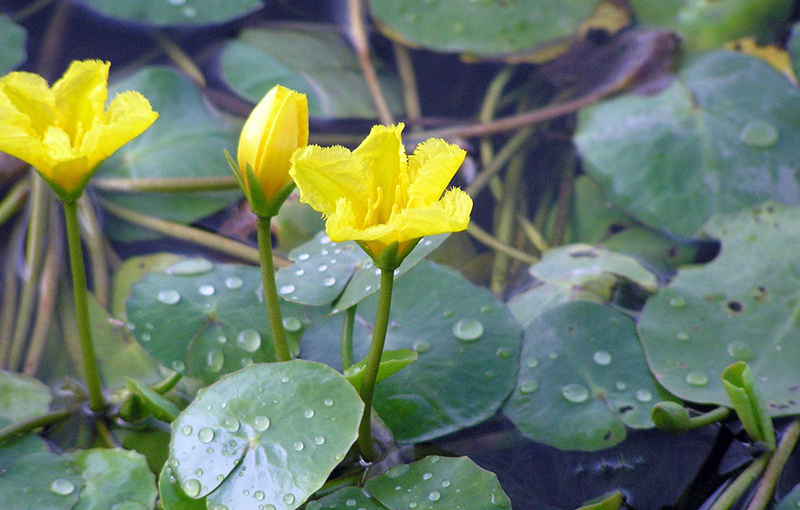
Yellow Floating Heart
Another common invasive floating-leaved species easily mistaken for native waterlilies is yellow floating heart (Nymphoides peltata). This species is similar to the waterlily species in that each stem has one leaf, but the leaves are much smaller and heart-shaped. When flowering, yellow floating heart produces small, star-shaped yellow flowers. When it invades a waterbody, it is able to cover the surface, shading out native vegetation and decreasing dissolved oxygen levels. Yellow floating heart is found in the Northeast, Texas, and in several western states. This plant produces many shallow branching roots called stolons that have the ability to produce new multi-stemmed plantlets. It is possible to control this species using physical and chemical means, though a professional should be consulted in designing the most effective means of eradication for your individual waterbody.
With their big leaves and handsome flowers, native floating-leaved plants provide aesthetic charm and create safe-havens for many aquatic species. However, it’s important to remember that beauty does not equate to environmental health; if invasive or exotic species are allowed to thrive in a lake or pond, they can choke out the open surface water and destroy the ecological and aesthetic value of a waterbody – all while looking lovely. A professional lake and pond manager can help you identify and remove non-native species and cultivate a robust aquatic ecosystem full of native, desirable aquatic plant life.
SOLitude Lake Management is a nationwide environmental firm committed to providing sustainable solutions that improve water quality, enhance beauty, preserve natural resources and reduce our environmental footprint. SOLitude’s team of aquatic resource management professionals specializes in the development and execution of customized lake, pond, wetland and fisheries management programs that include water quality testing and restoration, nutrient remediation, algae and aquatic weed control, installation and maintenance of fountains and aeration systems, bathymetry, mechanical harvesting and hydro-raking, lake vegetation studies, biological assessments, habitat evaluations, and invasive species management. Services and educational resources are available to clients nationwide, including homeowners associations, multi-family and apartment communities, golf courses, commercial developments, ranches, private landowners, reservoirs, recreational and public lakes, municipalities, drinking water authorities, parks, and state and federal agencies. SOLitude Lake Management is a proud member of the Rentokil Steritech family of companies in North America.









